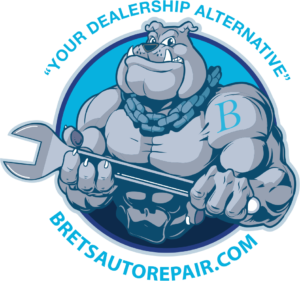Every car owner eventually faces the dreaded decision: should I repair this part or just replace it altogether? Whether it’s a failing alternator, a squealing belt, or a sluggish transmission, the answer isn’t always simple. At Bret’s Auto Repair in Lynnwood, we help our customers weigh their options every day, so here’s a practical guide to help you make the smartest choice for your vehicle and your wallet.
1. Start With the Severity of the Problem
If a part is completely nonfunctional, replacement is usually the best (and only) route. But if it’s showing minor symptoms like a noise, a leak, or performance issues, it might be possible to repair or refurbish the part.
Examples where repair might make sense:
- Minor exhaust leaks
- Small cracks in hoses or belts
- Brake pad wear (before rotors are damaged)
- AC recharge or seal replacements
2. Age & Mileage: Is the Part Near the End of Its Life?
Older parts, especially ones with over 100,000 miles of wear, may not hold up long even after a repair. In these cases, replacing the part is a better long-term solution, otherwise, you might be back in the shop sooner than you’d like.
Replace if:
- It’s a timing belt that hasn’t been changed in 60–100k miles.
- The water pump is original and you’re already doing a major service.
- The alternator or starter is failing repeatedly.
3. Cost Comparison: Repair vs. Replacement
This one’s simple: if repairing a part costs more than 50–60% of a full replacement, we usually recommend replacing it, especially if it improves reliability and performance.
Repair may be cheaper and effective for:
- Replacing seals or gaskets
- Patching radiators
- Cleaning EGR valves
Replace when:
- You’re facing internal engine damage
- Transmissions are slipping, leaking, and burning fluid
- ABS modules or control units are malfunctioning (electronics are hard to “half-fix”)
4. Availability of Quality Parts
In some cases, it makes sense to replace a part because:
- It’s hard to find quality repair components
- It’s time-consuming to rebuild or refurbish (which adds to labor costs)
At Bret’s Auto Repair, we use OEM-quality or better parts; because reliability matters more than saving a few bucks upfront.
5. Safety Always Comes First
Some components are too critical to gamble on, even if a repair looks possible.
Never settle for patchwork fixes on:
- Brake lines
- Steering components
- Suspension failures
- Tires with structural damage
These are not “wait and see” situations. If safety’s at stake, full replacement is the smart and responsible choice.
6. The Bret’s Auto Repair Approach
We never upsell or push parts you don’t need. Instead, we walk you through:
- The symptoms your vehicle is showing
- Short- and long-term costs
- What makes the most financial and mechanical sense
Our goal? To keep your car safe, dependable, and on the road without breaking the bank.
Not Sure Which Route to Take? Let’s Talk.
If your car’s showing signs of trouble – or you’ve been quoted a high repair bill elsewhere – bring it to Bret’s Auto Repair in Lynnwood for a second opinion. We’ll give you honest advice, break down your options, and help you make the best decision for your vehicle.
Book your appointment today or give us a call. We’re here to help!

